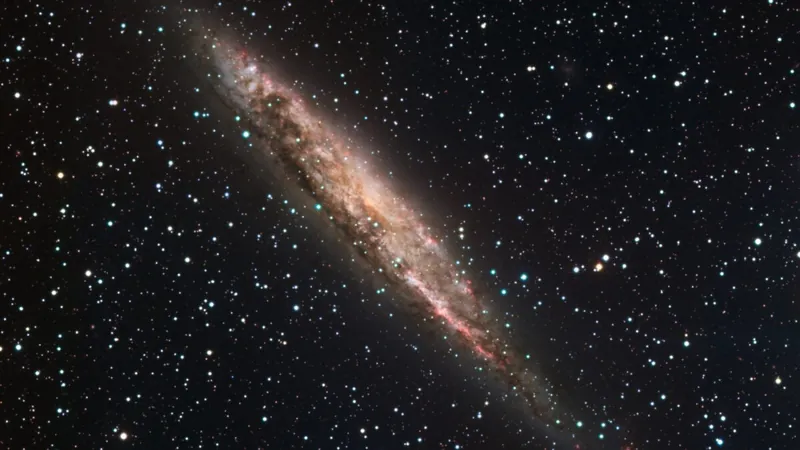
Astrophysicists Unveil Mysterious New Space Object: Meet Punctum!
2025-08-18
Author: Wai
A Mysterious Dot in the Cosmos
What initially appeared to be just another star has revealed secrets beyond imagination. When astrophysicists shifted their focus to polarized light, they stumbled upon a striking anomaly—an enigmatic point of brightness they've labeled "Punctum." According to Elena Shablovinskaia, a leading astrophysicist from Universidad Diego Portales in Chile and the Max Planck Institute for Radio Astronomy in Germany, the discovery has left them both intrigued and puzzled.
The Enigmatic Nature of Punctum
Punctum, derived from the Latin word for "point," shines as a bright spot in the cosmos, but here’s the twist: it’s only observable at millimeter wavelengths. This unusual object also possesses a remarkably organized magnetic field, further complicating the astrophysicists' quest to understand it. A new paper on Punctum is set to be published in *Astronomy & Astrophysics* and is already available on arXiv.
A Surprising Find in a Familiar Galaxy
Located in the nearby galaxy NGC 4945—famous for its nursery of young stars—Shablovinskaia's team anticipated that Punctum might be a known cosmic phenomenon, such as a magnetar or a supernova remnant. However, their assumptions quickly unraveled. Usually well-known among astrophysicists, NGC 4945 held shocking surprises, and it turns out, they might have overlooked something that was hiding in plain view.
Defying Classification
The more the researchers attempted to categorize Punctum within existing astrophysical frameworks, the more it resisted definition. When they examined the region using X-ray or radio telescopes, Punctum vanished. It only came to light in the millimeter spectrum through the Atacama Large Millimeter/submillimeter Array (ALMA), revealing its peculiar magnetic field that only deepened the mystery.
Unmatched Brilliance
To further investigate, Shablovinskaia and her team compared Punctum's brightness, polarization, and spectrum against a spectrum of extreme cosmic objects—magnetars, pulsars, star-forming regions, and black hole jets—but found no satisfactory comparison. What makes Punctum so extraordinarily unique, shining 10,000 to 100,000 times brighter than magnetars and 10 to 100 times brighter than most supernovas?
The Key to Understanding
The quest for answers may lie within Punctum's bizarre polarization, described by Shablovinskaia as a "fingerprint of the magnetic environment." The neatly aligned light waves surrounding Punctum alerted the researchers to its strangeness. Could further measurements of its magnetic field reveal its true nature or connections to established astrophysical entities?
A Reminder of the Unknown
Shablovinskaia concluded with a philosophical note: "Punctum shows us the universe can still surprise us in places we thought we understood well. For me, it’s a reminder that astronomy is far from finished; we’re just beginning to uncover the full array of cosmic objects that exist." Stay tuned as scientists dive deeper into the celestial mystery of Punctum!





 Brasil (PT)
Brasil (PT)
 Canada (EN)
Canada (EN)
 Chile (ES)
Chile (ES)
 Česko (CS)
Česko (CS)
 대한민국 (KO)
대한민국 (KO)
 España (ES)
España (ES)
 France (FR)
France (FR)
 Hong Kong (EN)
Hong Kong (EN)
 Italia (IT)
Italia (IT)
 日本 (JA)
日本 (JA)
 Magyarország (HU)
Magyarország (HU)
 Norge (NO)
Norge (NO)
 Polska (PL)
Polska (PL)
 Schweiz (DE)
Schweiz (DE)
 Singapore (EN)
Singapore (EN)
 Sverige (SV)
Sverige (SV)
 Suomi (FI)
Suomi (FI)
 Türkiye (TR)
Türkiye (TR)
 الإمارات العربية المتحدة (AR)
الإمارات العربية المتحدة (AR)